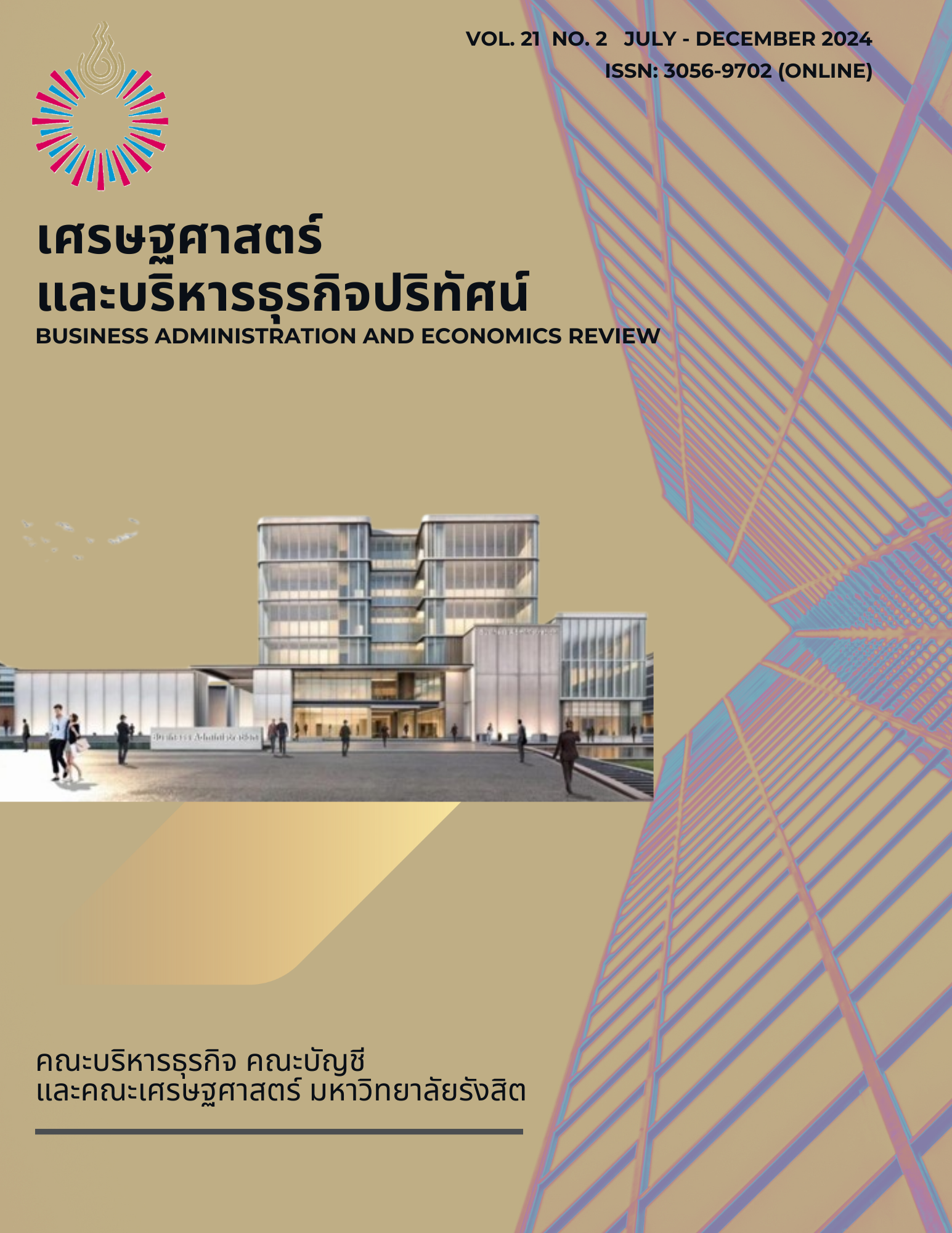Guidelines for Adding Value to Tai Lue Woven Fabric Products from Ban Sri Don Chai based on the Concept of a Creative Economy.
Keywords:
Product Value Addition, Creative Economy Concept, Cost and Return, Cotton Fiber Silk, Tai LueAbstract
This research aims to study the methods for adding value to Tai Lue woven products from Ban Sri Don Chai based on the concept of the creative economy and to analyze the costs and returns of cotton-silk blended fabric products, including project investment analysis and evaluation. Data was collected through interviews and group discussions with 39 purposively selected stakeholders. Quantitative data was analyzed using descriptive statistics, and qualitative data was analyzed using content analysis.
The research results indicate that the weaving group uses several strategies to add value to their products: 1) Proactive strategy, where new and modern designs are created to meet market demands, with the group collaboratively designing a unique pattern for the community called "Dok Kaew" pattern; 2) Defensive strategy, where costs are reduced by simplifying patterns while maintaining their value and quality; 3) Corrective strategy, which includes training on cost and return calculations and pricing; and 4) Reactive strategy, which involves training on design and transferring knowledge by recording patterns using computer software to facilitate design and transmission to future generations. The cost and return analysis revealed that the cost of a cotton-silk blend skirt is 5,061.18 baht/piece, with a profit of 2,838.82 baht/piece, while the cost of a cotton-silk blend shawl is 3,278.89 baht/piece, with a profit of 1,221.11 baht /piece. The project evaluation found that this project is worth investing in.
References
Chemsripong, S. & Petmee, P. (2017). Creating Value Added Products from Local Wisdom:A Case Study of the Ancient Clot. Journal of Community Development Research (Humanity and Social Sciences), 10(4), 62-85.
Chudhavipata, W. (2012). Textile: Reflection of Thai Traditions. Bangkok: Dhurakij Pundit University
Dononbao, C. & Peerasan, J. (2019). Innovation of Development in the HandWoven Cotton of the Local Identity in Loei Province. Journal of Fine and Applied Arts Khon Kaen University, 12(2), 23-42.
Jonpradit, S., Pongyeela, A. & Visalaporn, S. (2014). The Influence of Applying Creative Economy Concept, Factors Driving Creative Economy and Characteristics of Entrepreneurs to Market Success of Five Stars One Tambon One Product (OTOP) in Thailand. Suthiparithat, 28(88), 170-195.
Keativipak, K. (2016). Study and Development Applies Products from Cotton Hand Made to Products Design,Case Study : The Cotton Hand Weaving Groups at Donluang Village, Amphur Pasang, Lamphun Province. The Fine & Applied Arts Journal,11(1), 13-52
Mega, S., thanasripanitchai, P., Sangtamat, P. and Sanitchon, K. (2023). Financial Cost-benefit Analysis of Dong Yang-Pornpiboon village’s Indigo dyed Mudmee textile. Journal of Sustainable Tourism Development, 5(1), 93-111.
Office of the National Economic and Social Development Board. (2009). The Creative Economy. Bangkok: B C Press (Boonchin) Company Limited.
Phadoongsitthi, M. (2019). Cost Accounting (8nd ed). Bangkok: Thammasat University.
Sittioum, R., Jaithong, C., Somsi, K., Chaisomtakuland, P. & Wilaikul, S. (2022). Costs and Returns on Products from Thai-Yuan Woven Fabric of Thai-Yuan Cultural Center in Ban Dong Pradok, Samor khae subdistrict, Mueang District, Phitsanulok Province. Academy Journal of Northern, 9(4), 94-107.
Suksai, L., Hoksuwan, S., Phungphet, S. & Jedaman, P. (2021). Development to Sustainable Community Potential of Local Wisdoms Productive “Native Silk” Based on Sufficiency Economy & Creative Economy of Chaiyaphum Province Communities. Journal of Social Science and Buddhistic Anthropology, 6(7), 382-398.
Sunthorncharoennon, W. (2014). Creating a creative product or service is not as difficult as you think. Retrieved from http://www.amexteam.com/resources/helper/editor/upload/knowledge/1/01_pdf

Downloads
Published
How to Cite
Issue
Section
License
Copyright (c) 2024 Business Administration and Economics Review

This work is licensed under a Creative Commons Attribution-NonCommercial-NoDerivatives 4.0 International License.
The contents in Business Administration and Economics Review can be used for publication. But do not modify, modify or use it for trade and profit.

